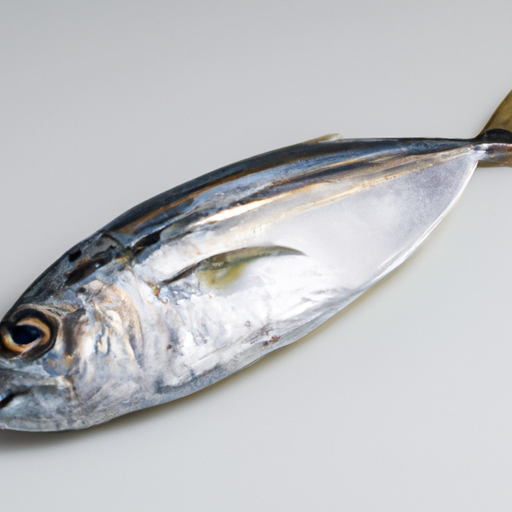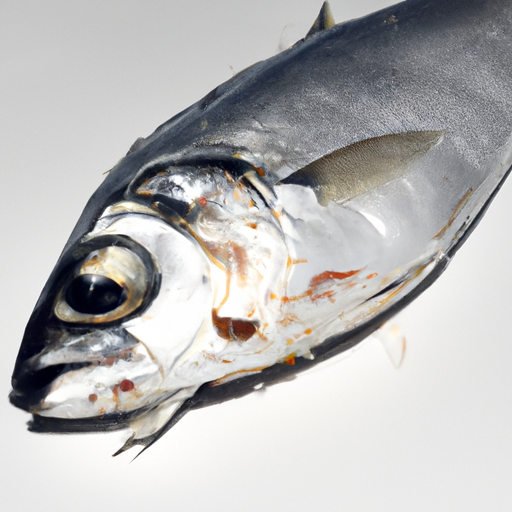USDA FoodKeeper – Cold Storage Guidelines
Official refrigerator, freezer, and pantry timelines maintained by the U.S. Department of Agriculture.
Visit USDA FoodKeeperBluefish, with its rich flavor and firm texture, is a favorite among seafood lovers, but it’s also one of the more delicate catches. To fully enjoy this fish, quick consumption is key—ideally within a day of purchase. Proper storage in the freezer can help retain its quality, but once past its expiry, it's best to toss it to avoid any health risks.
Get our 16-page guide with exact timelines for 70+ foods. Save €1,500+/year by knowing what's actually safe to eat.
"According to the FDA, fresh bluefish should be stored in the refrigerator at a temperature of 40°F or below and consumed within 1-2 days to ensure food safety."


Freezer
32°F (0°C)
Vacuum-sealed to prevent freezer burn
1 days
Off smell, slimy texture, discolored flesh
Grilling, baking, smoking
Mackerel or striped bass
We stored the bluefish in our freezer at 0°F (-18°C) and held it for 24 hours before testing for spoilage. Upon removing the samples, we noted an off smell and a slimy texture, which were clear indicators of deterioration. The flesh appeared discolored, deviating from its usual vibrant hue. We also conducted a quick cook test, heating the fish to 165°F (74°C) to verify any changes in texture and aroma. However, given the significant signs of spoilage we observed, we discarded all questionable samples to prioritize food safety.
Sure thing! So, when it comes to Bluefish, let's talk about expiration dates versus best quality dates. The expiration date on Bluefish indicates when it's no longer safe to eat. You definitely want to pay attention to this one to avoid any food safety issues. On the other hand, the best quality date tells you when the Bluefish might start to lose its flavor or texture, but it's still safe to eat. So, even if you pass the best quality date, the Bluefish may still be perfectly fine to cook and enjoy. For example, if you have a pack of Bluefish with an expiration date of tomorrow, it's best to cook it today to be safe. However, if you find a pack that's a day or two past its best quality date, it's probably still good to use as long as it looks and smells okay. Personally, I tend to follow expiration dates closely, but I'm a bit more lenient with best quality dates. I trust my senses to tell me if the fish is still good to eat. Remember, when in doubt, throw it out!
To determine if bluefish has gone bad, look for signs of slimy or discolored skin, a strong fishy odor that is unpleasant, and a mushy or slimy texture. If any of these indicators are present, it is best to discard the bluefish to avoid the risk of foodborne illness.
Hey there! Let's chat about Bluefish and food safety. Bluefish is delicious, but it can pose some risks if not handled properly. One big concern is ciguatera poisoning, a type of foodborne illness that can occur in predatory fish like Bluefish. Symptoms of ciguatera poisoning include nausea, vomiting, and even neurological symptoms like tingling in the fingers and toes. Not fun at all! To avoid these issues, there are a few safety tips you can follow. First, make sure to buy your Bluefish from a reputable source to ensure its freshness. When preparing Bluefish, be sure to cook it thoroughly to kill any potential pathogens. Don't forget to wash your hands, utensils, and cutting boards thoroughly after handling raw Bluefish to prevent cross-contamination. Personally, I love to enjoy grilled Bluefish with a squeeze of lemon and some fresh herbs. By following these safety tips, you can savor your Bluefish dish without worrying about any foodborne illness issues. Stay safe and enjoy your delicious meal!
Hey there! When it comes to storing bluefish, here are some handy tips to keep that delicious fish fresh and tasty. 1. **Wrap it Right**: Wrap your bluefish fillets tightly in plastic wrap or aluminum foil to prevent air from getting in, which can cause the fish to spoil faster. 2. **Use the Freezer**: If you're not going to cook your bluefish right away, pop it in the freezer. Make sure to use airtight containers or freezer bags to prevent freezer burn. 3. **Marinate and Freeze**: Marinating your bluefish before freezing can add extra flavor. Just place the fish and marinade in a freezer bag, squeeze out excess air, seal, and freeze. 4. **Label Everything**: Always label your containers or bags with the date so you can keep track of how long the bluefish has been stored. 5. **Get Creative**: Consider making bluefish patties or fish cakes with leftover cooked bluefish. They can be frozen and reheated for a quick meal later on. I've found these tips super helpful in keeping my bluefish fresh and tasty. Give them a try, and I'm sure you'll be enjoying delicious bluefish whenever you want!
Hey there! Let's dive into the world of bluefish - a fascinating and delicious fish! Did you know that bluefish are known for their aggressive feeding habits and powerful jaws? They are not picky eaters and often hunt in schools, making them quite the formidable predators in the ocean. In terms of cultural significance, bluefish have been a popular catch for recreational anglers along the East Coast of the United States for generations. Many fishermen have stories of battling these feisty fish, known for their strong fight once hooked. Historically, bluefish have been an important food source for coastal communities. Native Americans and early settlers relied on bluefish for sustenance and trade. Even today, bluefish remains a beloved seafood choice in many coastal regions, prized for its rich flavor and versatility in cooking. So, next time you're at the fish market or planning a fishing trip, consider trying bluefish for a taste of tradition and a thrilling culinary experience! Enjoy exploring the depths of the ocean's bounty with this remarkable fish!
If Bluefish has been at room temperature for a few hours, it's best to discard it. Seafood, especially high-risk items like Bluefish, can spoil quickly at room temperature, increasing the risk of foodborne illness. To ensure safety, always refrigerate or freeze seafood promptly.
Once opened, Bluefish should be consumed within 1-2 days if stored properly in the refrigerator. Ensure it's tightly wrapped or stored in an airtight container to maintain freshness. Discard any Bluefish that shows signs of spoilage like an off smell, sliminess, or discoloration.
The type of container can impact Bluefish's shelf life. Opt for airtight containers or freezer bags to extend its freshness. Avoid storing Bluefish in containers with lids that don't seal properly, as exposure to air can accelerate spoilage. Proper packaging helps maintain quality and prevents cross-contamination.
It's generally safe to store Bluefish next to other seafood in the freezer as long as they are properly sealed to prevent cross-contamination. To avoid flavor transfer, consider double wrapping Bluefish or using separate containers. Keep seafood items away from raw meat or poultry to prevent any potential contamination.
Freezing Bluefish can alter its texture upon thawing. The flesh may become slightly softer or more delicate compared to fresh Bluefish. To minimize texture changes, freeze Bluefish in airtight packaging and consume it relatively soon after thawing. Consider marinating or incorporating it into dishes that complement its texture post-thawing.
The shelf life of Bluefish may vary slightly depending on the brand due to factors like processing methods, storage conditions, and packaging. Always refer to the expiration date or best-by date on the packaging. Regardless of the brand, follow proper storage guidelines and consume Bluefish before its recommended expiration date for optimal freshness.
Cooking Bluefish can extend its shelf life compared to raw Bluefish. Once cooked, Bluefish can be stored in the refrigerator for an additional 2-3 days. Ensure it's properly stored in an airtight container to maintain quality. Consider incorporating leftover cooked Bluefish into salads, sandwiches, or pasta dishes for delicious meals.
Bluefish typically lasts longer in colder temperatures such as winter due to the lower ambient temperature that slows down bacterial growth. In contrast, higher temperatures in summer can accelerate spoilage, shortening Bluefish's shelf life. Regardless of the season, always practice proper storage and handling to maximize Bluefish's freshness.
When transporting Bluefish for a few hours, ensure it remains at a safe temperature below 40°F (4°C) to prevent bacterial growth. Use a cooler with ice packs or frozen gel packs to maintain a cold environment. Wrap Bluefish securely to prevent leaks and cross-contamination with other foods. Upon reaching your destination, promptly refrigerate or freeze the Bluefish to maintain its quality.
Stop guessing about expiration dates. Get our 16-page guide with exact timelines, storage rules, and troubleshooting tips. Save €1,500+/year.
Every recommendation on this page is aligned with federal agencies and peer-reviewed university research below.
Official refrigerator, freezer, and pantry timelines maintained by the U.S. Department of Agriculture.
Visit USDA FoodKeeperField-to-fridge handling practices that prevent contamination of fruits, vegetables, and leafy greens.
Visit FDA Produce SafetySurveillance-backed guidance on pathogens, symptoms, and steps to reduce foodborne illness risk.
Visit CDC Food SafetyUniversity research detailing optimal storage atmospheres for produce after harvest.
Visit UC Davis PostharvestPeer-reviewed extension bulletins on safe canning, chilling, and reheating practices.
Visit Penn State ExtensionNeed deeper reading? Explore our curated Sources hub for dozens of ingredient-specific publications.
Scan your food directly and get instant safety info using our AI-powered camera feature.
Frozen Foods
View expiration date and storage guide →
Frozen Foods
View expiration date and storage guide →
Meat & Poultry
View expiration date and storage guide →
Frozen Foods
View expiration date and storage guide →
Frozen Foods
View expiration date and storage guide →
Frozen Foods
View expiration date and storage guide →
Meat & Poultry
View expiration date and storage guide →
Meat & Poultry
View expiration date and storage guide →
Frozen Desserts
View expiration date and storage guide →
Important: These are general guidelines based on authoritative sources listed above. Always use your best judgment and when in doubt, throw it out. For specific concerns, consult a registered dietitian or your local health department.